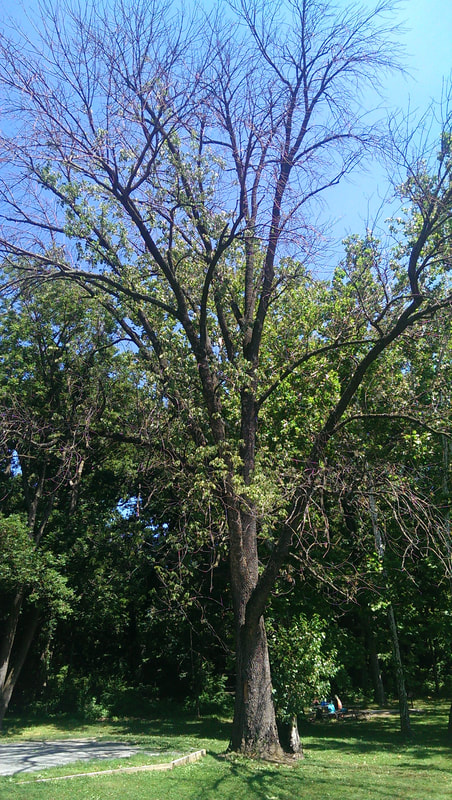
If you drive through Illinois or Wisconsin, you see the tree carnage everywhere. Just glance out your window for a few miles and you’ll see decimated branches, bare trees, multiple trunks in a row with no greenery – the wreckage.
A few weeks ago, I visited with several friends in Kankakee, IL to play golf at the Elks Club. Across the course, there were leafless ash trees on almost all 18 holes. And this was after the greens keepers had taken down many of the dead ones already and burned them.
It was the burning that got me to thinking that proactive action is required in these situations. Frankly, I don’t know how to stop the insect from infesting new areas. So why not burn them while they’re in the tree?
That got me thinking about the flame thrower. I’m not talking about decimating forests, so hear me out.
The tactic to defeat the Emerald Ash Borer can start in a stand of trees where it’s clear an infestation has started. Make sure the fire department is on hand. Then bring in the flamethrowers to torch the trees. The fire department stands watch to prevent any spread of the blaze and jumps into action if it looks like there might be a problem.
If not, they just let the blaze burn itself out and kill the insidious insects destroying the trees. As a first step, this tactic can be applied to multiple trees when it is discovered the borer has appeared and started to attack.
This is war. We need to battle back.
I doubt there will be an immediate cease fire. Probably, at best, we can slow the enemy down. If we can, for example, limit their devastation of the ash species to 50 percent or 40 percent, we can declare a limited victory in the short run. Perhaps we’ll scare them off. “Henry, here come the humans with those torch things, let’s take a hike.”
Seriously, we should be coming up with much more thought-out and intelligent solutions to stop this species loss. I don’t see any forward thinking.
A longer term solution is to stop monoculture planting of trees when landscaping is done by businesses or local communities. When you plant the same tree over and over and over again, it becomes susceptible to a specific pest. Why not select five different types of trees and space them out so that you never have the same species next to each other? It only makes sense, but for some reason you don’t see this very often.
We’ve introduced 6-8 local species of trees to our land here in Wisconsin over the past two years. Hopefully over the years that will add diversity to our neck of the woods and lead to a more sustainable ecosystem. My wife and I find great satisfaction in making this contribution.
Everyone can take a similar step on their parcel of land in terms of helping to create a stronger mix of woods and forests. Just watch out for the flame thrower.